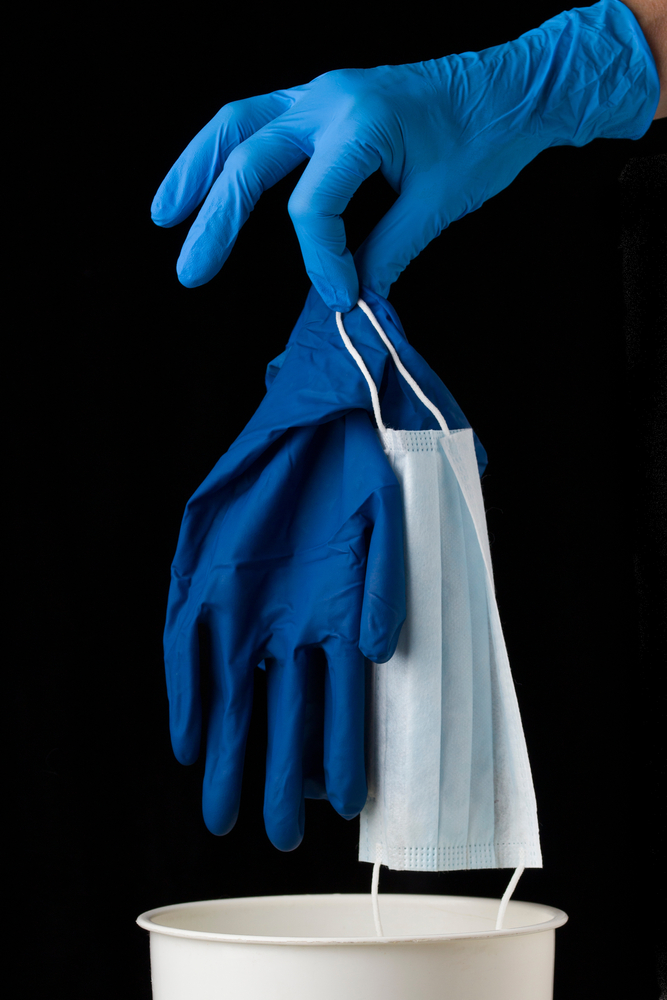
The number of persons infected with the coronavirus disease (COVID-19) is continuously rising throughout the world. In these circumstances, waste management, including of hazardous, medical, and household waste is of extreme importance. During the viral outbreak, many types of additional medical and hazardous waste are generated including infected masks, gloves, syringes, samples, and other protective equipment, drain bags, urine bags, body fluid or blood-soaked tissues/cotton, empty ampules etc. Medical waste and household waste, when mixed, can create secondary impact upon the health of the community at large and the environment. Unsound management of this waste could cause unforeseen “knock-on” effects on human health and the environment and therefore, safe-handling and disposal of such waste is essential.
Though it is early to have exact figures, by some estimates, medical waste generation has increased six-fold compared to pre-COVID-19 times.
As per the reports of The South China Morning Post, during the height of the outbreak in Wuhan, the city was dealing with 240 tons of medical waste per day (about the weight of an adult blue whale), versus 40 tons prior to that. In the Indian scenario, there is lack of exact data on the subject, but conservative estimates draw a grim picture. As per a joint report by Associated Chambers of Commerce and Industry of India (Assocham) and Velocity in 2018, the total quantity of medical waste generated in India (in 2018) was 550 TPD, and these figures are likely to increase close to 775.5 TPD by 2022. Looking at these numbers and adding to them, the waste generated during the COVID-19 crisis, the situation is nothing short of challenging and may worsen in the coming months.
The following best practices from around the world are worth looking at:
China
The disposal of medical waste generated from COVID-19 patients undergoes a strict treatment protocol to contain the spread of the virus. Medical waste is being disposed at safe sites quickly to limit any possibility of the viral spread. Firefighters have been deployed to ensure quick disposal at waste designated sites where the environment protection department safely disposes off the waste.
United States of America
The US Environment Environmental Protection Agency (EPA) has been quick to release a ‘temporary policy’ for the industries generating hazardous waste (including the generation of medical waste) in the times of COVID-19. The EPA has accorded special thrust on ‘proper labelling’ for easier identification and safe disposal of the waste. The applicable regulations require segregation of regulated medical waste from ordinary solid waste and a special treatment process to render it non-infectious before final disposal. Moreover, the Occupational Safety and Health Management guidelines, under the United States Department of Labour, advise the use of typical engineering and administrative controls, safe work practices, and Personal Protective Equipment (PPE), such as puncture-resistant gloves and face and eye protection, to prevent worker exposure.
France
In France, the government decided to ensure door-to-door collection of waste as per usual frequency, with sorting instructions to citizens. Objects (masks, glasses, gloves, tissues, etc.) that are likely to present an infection risk for both the environment and professional in charge of treating them, must be disposed in a hermetically sealed bag. Any pungent, cutting, or puncturing waste must be collected in airtight containers adapted and managed by the specifically designated organisation. Self-treatment patients have the option to obtain a waste collection-box free of charge from the pharmacy upon presentation of their prescription. Once filled, the box must be closed and returned to a collection point, after which the waste is adequately disposed.
Germany
The German government has accorded highest priority to the protection of waste management workers and the containment of COVID-19. Significant measures have been taken for handling waste from private households where there are confirmed or suspected cases of COVID-19. Handkerchiefs, tissues, and similar waste fractions are required to be disposed as residual waste and limited use of separate waste collection systems (e.g. paper bin, bio bin, yellow bag) is recommended. The residual waste is then treated in the Bavarian waste incineration plants to ensure safe destruction at very high temperatures of up to 1,000 °C.
India has come up with its own guidelines by the Central Pollution Control Board, India to ensure safe disposal of biomedical waste generated during treatment, diagnosis, and quarantine of patients with COVID-19.
It is worth noting that India was one of the first countries to take a proactive step in this direction. The CPCB guidelines provide a series of steps for safe disposal of waste generated in isolation wards with COVID-19 patients, sample Collection Centres and Laboratories for COVID-19 suspected patients and quarantine camps/home-care facilities. The guidelines also outline the duties of Common Biomedical Waste Treatment Facilities, State Pollution Control Boards and Urban Local Bodies.
The key actions mandated for various stakeholders include:
- Separate colour coded bins/bags/containers in wards and maintaining proper segregation of waste as per Bio-Medical Waste Management Rules, 2016.
- Double-layered bags (using two bags) for collection of waste from COVID-19 isolation wards to ensure zero-leaks.
- Dedicated/marked collection bin and temporary storage area of biomedical waste prior to handing over the same to authorized staff at Common Bio-medical Waste Treatment Facility (CBWTF) for priority treatment and immediate disposal.
- Maintaining separate record of waste generated from COVID-19 isolation wards.
- Disinfection of inner and outer surface of containers/bins/trolleys used for storage of COVID-19 waste with 1 per cent sodium hypochlorite solution daily.
- Reporting operation of COVID-19 ward and COVID ICU ward to SPCBs and respective CBWTF located in the area.
- Dedicated sanitation workers for biomedical waste so that COVID-19 waste can be collected and transferred timely to temporary waste storage area.
- General solid waste generated from quarantine centers to be handed over to waste collector identified by Urban Local Bodies (ULBs).
- Biomedical waste, if any, generated from quarantine centers/camps to be collected separately in yellow coloured bags (suitable for biomedical waste collection) provided by ULBs.
- COVID-19 waste to be disposed-off immediately upon receipt by the Common Biomedical Waste Treatment Facility (CBWTF). The CBWTF may employ any of the permitted methods under the Bio-medical Waste Management Rules, 2016. These methods include incineration, Plasma Pyrolysis, Autoclaving/Hydroclaving, microwaving, chemical disinfection, among others.
The challenge of safe disposal and treatment of COVID-19 related biomedical waste is increasing by the day and to facilitate further action and consider innovative solutions, the Office of the Principal Scientific Adviser to the Government of India has, in partnership with Invest India under the ‘Waste to Wealth Mission’ recently announced the COVID-19 Biomedical Waste Treatment Innovation Challenge.
#Covid_19


